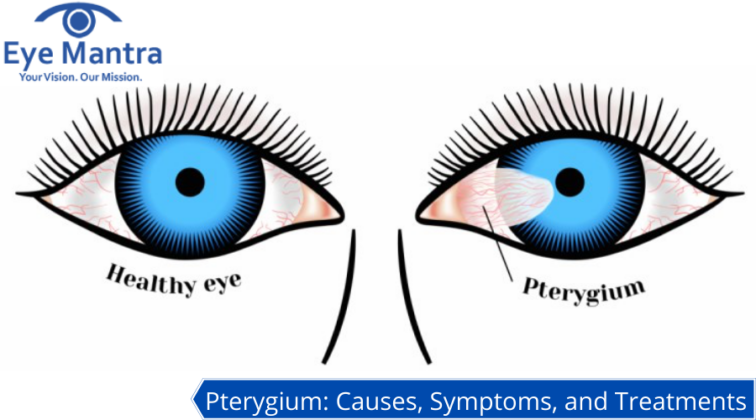
Contents
This fairly common condition is characterized by a growth of pink, fleshy tissue on the white of the attention (sclera) that then encroaches on the cornea the clear window at the front of the eye). Pterygium always occurs on the side of the attention closest to the nose. It is usually harmless and doesn’t require treatment. However, if progressive and enlarging in size, it should be removed because it can eventually interfere with vision and cause significant scarring.
If you suffer from this condition you’ll be ready to see a wedge-shaped growth on your eye. You’ll probably desire you’ve got something in your eye, and knowledge sensations like grittiness, itchiness, burning, redness, and inflammation. You’ll feel more discomfort when the pterygium is growing.
You may also experience blurred or distorted vision if the pterygium has grown onto your cornea to an outsized degree. However, reduced vision is rare in developed countries. It occurs thanks to growth towards the centre of the cornea or induced astigmatism. They vary from person to person. While most people only notice the formation of a pterygium when looking within the mirror, others may experience mild symptoms which include:
This condition is caused by exposure to UV rays and dry and dusty conditions. For this reason, it’s more commonly seen in people that have lived near the equator or in very sunny places. Pterygia are usually seen in people aged between 30 and 50 and is more common in men than in women.
Exposure to excessive amounts of ultraviolet (UV) light from the sun is assumed to be the first cause for the event of those growths. Additionally, people whose eyes are exposed to certain elements, (including pollen, sand, smoke, chemicals, and wind) on a daily basis have a better risk of developing this condition. For this reason, this condition occurs more frequently in people that sleep in warm climates and spend tons of their time outdoors in sunny or windy environments (for example farmers and welders).’
This condition is never seen in children because it usually develops in people older than 40 years aged. Pterygia occurs twice as frequently in males than females, presumably thanks to an increased likelihood of an outside work environment for men. Furthermore, being a replacement Zealander, it important to remember that the danger of pterygia is higher in New Zealand compared to other regions of the planet thanks to our depleted ozonosphere causing reduced ultra-violet light filtering.
In most cases, a stable condition is harmless and may be left untreated. If there’s discomfort, this will be treated using lubricating eye drops for symptomatic relief. It’s important to watch your condition because it may grow and affect your vision within the future, albeit it’s not causing any problems at the instant. If it’s affecting your vision it’ll get to be surgically removed.
If surgery is important, like most eye surgery procedures, it is often performed under local or general anaesthetic, counting on the dimensions and site of the pterygium and your own preference.
Your surgeon will use micro-instruments to get rid of the pterygium. He or she is going to then perform an auto-graft, using tissue from a neighbourhood of normal conjunctiva to fill the gap where the pterygium was. The graft tissue is typically harvested from the world of the attention covered by the eyelid. The graft is either glued or sewn into place using stitches which will dissolve within a couple of weeks of the surgery.
This technique, referred to as conjunctival autografting, is currently the foremost effective method of doing the surgery. It reduces the prospect of the pterygium recurring to but 5% – the foremost common complication related to pterygium surgery.
If you’re experiencing symptoms like irritation, redness, burning, and blurred vision or are concerned about the possible growth of pterygium in your eyes. Book a meeting with an eye specialist on Eyemantra. We also offer various services like Retina Surgery, Specs Removal, Lasik Surgery, Squint, Cataract Surgery, Glaucoma Surgery, and much more. To book a meeting with one among our expertly trained ophthalmologists at Eyemantra, turn 08851044355.